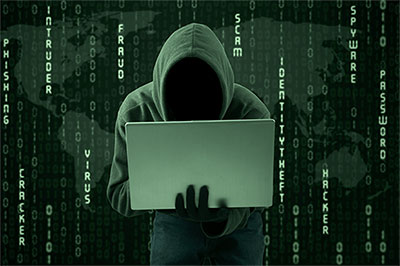Within the last few months, incident after incident of high-profile data breaches, like the credit card readers at Target, and online vulnerabilities, think the Heartbleed Bug, has flooded the media so much that it has left a lot of people feeling a bit numb to the subject or paralyzed, not knowing what to do to fight against keeping their personal data safe. Maybe this is why in a recent national Consumer Reports survey 62% of 3,110 online consumers said that they have done nothing to protect their Internet privacy.
 I don’t think this high number is from lack of caring; I think people are worried. They just don’t know how to deal with a problem that is so seemingly out of control.
I don’t think this high number is from lack of caring; I think people are worried. They just don’t know how to deal with a problem that is so seemingly out of control.
It turns out that one of the most effective defenses against hackers is a well-educated, vigilant individual, so here are some ways to make yourself a hard target by recognizing online vulnerabilities and ways to strengthen your defenses.
Vulnerability #1 - The Cloud
Using resources like Evernote or Dropbox, both of which store information in the Cloud, are great for file storage and organizing tasks, but their security record isn’t too bright. Remember, information stored in any cloud is only as secure and accessible as the cloud provider makes it.
What do I do? Be sure to encrypt all information stored in the cloud to make it more difficult for hackers to read.
Vulnerability #2 – Social Media
Think about all the topics that are on your social media being exposed to people you don’t even know. It’s really a scary thought, isn’t it? Have you posted pictures of your children? Or, maybe you’re excited about an upcoming vacation and posted details on when you will be away from your home.
Social networks house a vast amount of personal data to help criminals figure out exactly where you live and who you friends are, not to mention other information such as where you work, your hobbies, etc. In fact, there can be so much information out there about you that hackers can fill in password-reset forms and gain access to your accounts.
What do I do? To enhance your social media safety, limit the amount of personal information you share on social networks, and restrict your privacy settings to just allow family and friends to interact with you.
Vulnerability #3 – Computer
Things like malware, ransomware, scams, bugs, and viruses all come to mind when thinking of safety and security relating to a computer. Also, email phishing has gotten way more sophisticated, appearing to come from legitimate companies, but when you click on an embedded link within the email, malware is instantly installed onto your computer. This malware can disable your computer, infect it or integrate it to launch even more attacks.
What do I do? Always use security software, keep your computer system up-to-date and be very skeptical when surfing the Internet. Never click on suspicious links, be them web pages or emails.
Vulnerability #4 – Smartphone
Hackers target Android phones, but even iPhones can be susceptible to attacks. Mobile malware can invade your whole phone, steal your contact list and even subscribe to premium services without your knowledge. How about a $1,000 phone bill?
What do I do? Only install apps from Google Play, iTunes and Windows Store.
Vulnerability #5 – Doctor’s Office
Healthcare facilities are a gold mine for hackers because these facilities collect and store patient Social Security numbers along with other patient information: home address, phone numbers and email addresses.
What do I do? If your doctor or a healthcare facility really needs your social security, have them contact your insurer.
Vulnerability #6 – Shopping
We all have that one store that we just love to shop, but all merchants have risks when it comes to processing credit and debit cards. By law, credit card losses are limited to $50, but debit cards are more complicated. Once you receive your debit card statement, you have 60 days to report unauthorized charges, and your account could even be cleaned out.
What do I do? Frequently check your statements and as soon as you see suspicious charges, report it immediately. Also, avoid transactions from merchants who have to type or photograph your card into a smartphone.